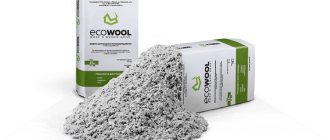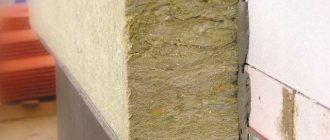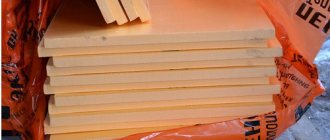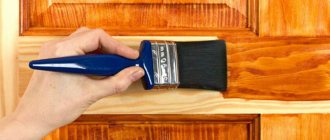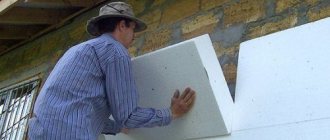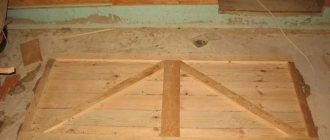Comfortable living is ensured not only by the availability of utilities and the design of the premises. It is important to protect the house from heat loss, which is important during the cold season. Doors and windows are powerful sources of cold air entering the home. There are several ways to keep your room warm.
Replace doors with energy-saving designs. This is not cheap and involves related operations to design slopes, install platbands, etc. In many cases, it is possible to solve this problem in affordable ways without significant costs. One of the traditional insulation materials is felt door seal, which has both disadvantages and advantages.
Advantages of felt seals
Today, manufacturers offer a new generation of materials that are easy to install and affordable. The share of felt products is decreasing, but it is too early to abandon their use, since they have a number of special qualities:
- Wear resistance. Natural fibers can withstand significant physical stress without deteriorating.
- Life time. Unlike rubber and foam seals, felt does not contain volatile substances, the content of which steadily decreases during operation. This leads to destruction of the material and requires replacement. Felt seals do not lose their properties for many years.
- Soundproofing. The material absorbs vibrations. Both outside noise and the sounds of the door in contact with the frame are dampened.
- Environmental friendliness. Only natural raw materials are used in production. There is no release of substances harmful to health.
- Fire safety. The density of wool fibers and their quality are such that combustion is impossible under normal conditions.
Ready-made felt seal for doors
Areas of use
Among ancient cattle breeders, felted wool material was universal: it was used to make the walls of temporary dwellings, it protected in battle, kept warm in winter, and was used for decorative purposes, and our ancestors could not imagine themselves without comfortable and warm felt boots and hats. Since the middle of the last century, felt, felt and other traditional materials began to be gradually forced out of everyday life, but were still widely used in production, agriculture and even in various sports.
However, in recent decades there has been a real boom in all kinds of felt products. Instead of reliable but clumsy felt boots, beautiful and waterproof shoes are produced, which quickly became fashionable for all ages. Consumers also appreciated the comfort and healing effect of felted indoor slippers, the convenience and reliability of bath accessories, the stylish appearance and warming properties of clothing for the cold season. And finally, felt has become a popular material for making bags, decorative cases, various art products, and toys.
Popular publications:
Features and BenefitsThe insulation is a low-density porous material, the granules of which are produced by firing foamed raw materials...
Drawing up a diagram The complexity of manufacturing and installation largely depends on the type of visor. It is the configuration of its coating...
Preparation for installation Before starting installation, you need to remove the old door. This must be done carefully, trying not to...
Caution polynore CAUTION "POLINOR". We go to the official website of the so-called “revolutionary insulation POLINOR” and look for contacts.…
Disadvantages of felt seals
Previously, felt was used everywhere as insulation and sealant. It was considered the best material for these purposes. Why is this method of protecting your home from the cold inferior? Despite the fact that the user qualities of felt are not in doubt, there are also disadvantages:
- Price. Production refers to traditional technologies with a centuries-old history. Felt is made from natural wool. During hydrothermal treatment, fibers are pressed into sheet or roll material. The cost of raw materials and labor create a price that is higher than synthetic fiber of similar size.
- Difficult to install. It is difficult to find a felt seal that satisfies most requirements on sale. All operations require an individual approach and qualifications. The range of felt materials is limited. You need to independently cut the strips of the required width and choose the method of fixation.
Rolled felt
- Attractive to moths and mice. Unlike microorganisms and mold, which do not live in felt, rodents and some types of insects like the material. Moths perceive felt as a food product, and mice insulate their minks with it.
Attention! When purchasing, you should carefully read the information about the product on the packaging or in accompanying documents. Natural felt is 100% wool. There are materials on sale with a similar name, but they cannot be considered as such. In cases where the percentage of natural fiber content is indicated in the composition, and even more so when it is absent there.
Manufacturing technology
Felt manufacturing technology is one of the most ancient. It involves exclusively manual labor and appeared long before the advent of weaving machines and even knitting tools. It is surprising that this technique has survived to our times, and has not sunk into oblivion, like many others. Moreover, products made from felt and felt are very popular not only in Russia, but also in Europe. Wool is used in its production, and sheep wool is best.
So, sheep's wool is laid in thin layers on fabric. Grate the soap. Pour hot water into the soap and shake until completely dissolved. The resulting hot soap mass is applied to the wool. By clapping your palm, the hairs gradually fall off. To increase the density of the fabric, you can apply one or more layers of wool and repeat the felting procedure. When laying wool, it is advisable to ensure that the wool is not laid parallel, it should be laid in different directions. This will give strength to the resulting material. The resulting material must be dried for approximately 24 hours.
When felting wool, it is also worth mentioning a special direction in felting technology - felting. It is often called dry felting. When filing, a special filing needle is used as a working tool, on which notches and notches are applied at different angles. These notches help to snatch individual hairs from the general wool mass and slowly tangle them, forming a felt material. Often, the felting method is used to make not material in the usual sense, but small objects - toys, decorative crafts, small parts for women's and men's accessories. This method is ideal for making and shaping three-dimensional products, while you can help yourself with your hands, pulling out any element if necessary.
The felting method is also often used if it is necessary to create a pattern on already prepared felted material. To do this, felted fabric is placed on a dense object. The drawing is carefully laid out on it. Often this design is secured, for example, with thin packaging film, although experienced craftswomen can easily do without it. Then, with careful and quick movements with a felting needle, the pattern is driven in and imprinted into the felt.
The technology for making felt is practically no different from felt, with the only difference being that finer types of wool are used in making felt. Synthetic fabrics are often added to felt. The external finish determines the type of felt - pile or smooth. Pile, in turn, is divided into “suede”, short-pile, “velor” and long-pile. Felt is often used in garments that come into direct contact with the body, such as a hat or scarf, because the felt's texture is pleasant to the body and does not create the slight tingling effect that coarser felts sometimes have.
Types of felt seals
The production of the material is localized in regions that traditionally produce wool products. Classic technology is rooted in the distant past and has secrets. Not all developed countries know how to make felt. In Russia, production secrets have not been lost, and the products enjoy well-deserved respect. Despite the fact that the manufacturing process is traditional, the quality of the products is regulated by state standards. The consumer can choose the desired felt from the following types:
- GOST 288-72. Fine-wool technical felt. Inclusion of synthetic substances is allowed. Its main application is in technology. Gaskets and seals made of this material are used in mechanical engineering;
- GOST 6308-71. Semi-coarse technical felt. Excellent wear resistance. Used in mechanical engineering and in small quantities in construction;
- GOST 6418-81. Coarse wool technical felt. Used in many areas of economic activity. From mechanical engineering to construction;
- GOST 16221-79. This type of felt is called yurt. The name corresponds to the purpose of the material. Available in the form of rectangular cavities. There is no single standard. Allowed length is from 2 to 6 m, and width is from 1.4 to 2 m;
- Felt. It is used for technical purposes and in the production of household items and clothing. Expensive type of felt. Produced in thicknesses from 2 to 10 mm. Felt padding is made from old items such as hats or anti-shock layers removed from packaging and is used to transport fragile, valuable instruments and devices.
Automotive soundproofing felt
Any felt is used as a door seal. The minimum required thickness should be taken into account. The dynamic compression coefficient of felt is limited. For this reason, the difference in gap width should not exceed 2-3 mm. Otherwise, the door leaf rebate will not be airtight, the seal will be partial and the protection will not be effective.
Advice! If the width of the gap is uneven, you can pre-fill places with a large gap with pieces of felt of the required thickness. It is easy to cut lengthwise. After preliminary leveling, the finishing felt strip is installed. Another option involves installing a felt seal with the end side relative to the plane of the door. In this case, it is effective to form a roller.
Felt and felt - what kind of materials?
The main material for making felt is animal wool, mainly sheep. The top layers of hairs have a scaly layer, which adhere to each other under the influence of steam or hot water. However, the wool of wild sheep does not have such a texture, so it is generally accepted that felt was first made no earlier than the 5th-6th centuries BC, and the original material was still the hair of dogs and horses, which were domesticated during that period.
Horses, dogs and sheep were first domesticated by nomadic peoples. The horse helped to carry the heavy load, the dogs guarded the flock of sheep. The most ancient felt products were found on the territory of modern Bashkiria and Altai. Gradually, the technique for making this material passed on to other nomadic pastoralists in Central Asia and the Caucasus.
And in this online store of our partners you can buy very high-quality felt at low prices
With the increase in skill, the Bashkirs acquired the opportunity not only to make products for themselves, but also to sell them to other peoples, for example, a non-woven felt carpet. The Bashkirs generally widely introduced felt products into their everyday life. They were also used as insulation for yurts, as a canopy from rain and sun. Bags and prayer rugs were made from felt. Felt products were necessarily included in the bride's dowry. There is still a custom of placing a small rug of white felt under the bride’s feet when she arrives at the groom’s house. The groom's mother invited the bride to come in and sit on the felt bunks. It was believed that this would help the future family to have many children.
Felt was also credited with medicinal properties. Felt belts were used to treat people from radiculitis and arthrosis. They used strips of felt fabric to massage, which, according to ancient nomads, had a beneficial effect on blood circulation and also helped get rid of back pain. This was especially true for nomads - people constantly in the wind.
Read also: The soil in the greenhouse has turned green, what to do
When do you need to insulate?
Wood has low thermal conductivity, but the disadvantage of the material is its response to changes in humidity and temperature. The door block dries out, swells, warps and even cracks. There are three main reasons signaling the urgent need to insulate a wooden door in a country house:
- Formation of gaps between the frame and the ends of the opening walls . Initially, during installation work, all gaps are foamed. Foam is a good insulator, but over time it loses its properties. Destruction occurs faster on the street side if platbands are not installed. Foam deteriorates from exposure to the sun. Another cause of cracks is the misalignment of the bowl.
- Formation of gaps between the frame and the sash . The most common defect in a wooden entrance door occurs due to poor wood, poor-quality installation and long-term use. Often the owner himself becomes the culprit when he trims the swollen sash so that it closes better. After drying, the product decreases in size and a gap forms.
- Wear of insulation. Each thermal insulation material is selected taking into account operational requirements. If they were not initially followed, the incorrectly selected insulation loses its effectiveness. For example, mineral wool quickly cakes, and due to dampness it decreases in volume. Any old wooden door, as well as a thin leaf, needs to be insulated.
Which insulation is better to choose?
To make an insulated wooden door with your own hands, you will need thermal insulation material, as well as material for the top decorative finish. The gaps are sealed with a sealant. When the question arises of how to insulate a wooden door in a private house, pay attention to the following materials:
- polystyrene foam as internal insulation for wooden entrance doors. The slabs can be sheathed on the side of the room.
- Foam rubber is considered the most common insulation material, which is covered with artificial leather on top. Porous material allows you to create a volume effect. Foam rubber loses over time and crumbles into crumbs.
- Mineral wool does not burn, has good thermal insulation properties, but quickly cakes. When exposed to dampness, it accumulates moisture. Under the weight it slides off a vertical surface.
- Foamed polyethylene - isolon has a structure similar to foam rubber. The material has better thermal insulation properties and a longer service life. Isolon does not tolerate long-term exposure to direct sunlight.
- Polyurethane foam is applied by spraying, firmly adheres to the wood, and penetrates into all cracks. The disadvantage is the impossibility of performing work without special equipment.
- Expanded polystyrene resembles polystyrene foam, but has improved characteristics. The material has self-extinguishing properties when exposed to open fire.
When choosing insulation for the doors of a wooden house, it is important to consider the thickness of the material. Thick layers will weigh down the sash and create an obstacle to normal closing. Thin is useless. You need to find a middle ground between these two parameters.
Types of seals for door frames
In addition to thermal insulation, you will need a sealant to seal the cracks around the perimeter of the canvas. It is a tape that differs in thickness and material:
- The foam strip is fixed using an adhesive base. The seal wears out quickly during the season.
- The silicone strip is resistant to dampness and elastic. Over time, it begins to stick and tear into pieces.
- The rubber seal for wooden doors will last for many years. The tape is resistant to wear, dampness, and mechanical stress.
- Thermoplastic is the best in terms of wear resistance, but is difficult to install.
- The polyurethane strip is glued due to the adhesive base. The characteristics are not inferior to a rubber seal.
Thermal insulation cannot be done without decorative finishing. Usually the insulation is covered with artificial leather. Fixed with furniture nails with a wide decorative head. On the inside, the canvas is sheathed with laminated MDF panels. Genuine leather trim looks beautiful, but the material is very expensive.
Criteria for choosing building materials
If you carry out insulation yourself, it is preferable to purchase a self-adhesive version. Craftsmen advise having foam rubber or felt available. Using them is not difficult. A sash equipped with this gasket can be closed without any effort. The sealing material – rubber is characterized by high wear resistance.
Soft rectangular, tubular rubber seals are also in demand. Their service life is 5-7 years. They protect the room from odors and extraneous noise. The thermoplastic-based profile is resistant to temperature changes.
Craftsmen focus on the choice of filler for insulating the sash and the space around the frame. This process must be conscious, as it is difficult to change them
When choosing, you need to pay attention to the thermal conductivity coefficient. It determines how the material will handle heat retention. For wooden products, thin fillers are a good option. The use of soft insulation greatly simplifies the work. Its advantage is that it covers the surface with a reserve and shrinks as much as necessary
It is important to measure the thickness and dimensions of individual structural elements with increased accuracy
How to insulate a wooden door?
The insulation of a wooden door begins with preparatory work :
- weakened hinges are secured with new elongated screws;
- if thick, heavy insulation is used, install an additional loop;
- eliminate box distortions and fabric defects;
- check the condition of the seal around the perimeter of the door frame at the junction with the walls;
- replace broken fittings: lock, handles, peephole, latch.
After all defects have been eliminated, installation of insulation on wooden entrance doors begins.
a vapor barrier necessary when insulating wooden doors? When arranging the installation seams of the door block - it is necessary. The gap between the box and the wall is sealed with foam. To prevent the thermal insulation from deteriorating, the seam is covered from the street with PSUL tape. From the room side, the foam is destroyed by vapors. For protection, the seam is sealed with vapor barrier tape. A vapor barrier may be required for the product if it is installed in a damp room and mineral wool serves as thermal insulation.
Installation of double doors
A good way to insulate your home is to install a double entry door. Due to the formation of an air space separating the room from the street, heat is retained. The disadvantage of this design is the reduction in space.
A threshold is set for the indoor unit. Insulation is additionally laid on the slopes between the doors. There are designs where two doors are hinged on one deep frame.
When insulating entrance doors, you must remember that moisture affects the canvas from the street side. Treatment with impregnation, painting with paint or varnish will help protect against dampness as much as possible. Drying oil creates good waterproofing.
Felt comes in rolls and sheets.
In one of the earlier articles, we introduced you to how to insulate a bathroom. Today we will talk about a very old, but, unfortunately, insulation made from natural sheep wool, which has lost its popularity - felt. This material is ideal for insulating doors, window and door frames, and the crowns of log houses. But if you want to completely isolate your house with it, you will encounter many problems, solutions for which are extremely difficult to find. “There are no hopeless situations,” said the notorious Baron Munchausen, but despite this, there is still no developed clear method for insulating walls with felt.
What kind of felt insulation for doors is there?
What a pity that this excellent, natural material with excellent characteristics is almost forgotten. Today, felt is used to insulate doors and window openings. In ordinary houses, this is where it ends, but if we are talking about wooden structures or a bathhouse from a log house (timber), then it is also used as inter-crown insulation and for caulking cracks. And probably no one even knows that felt insulation comes in different forms:
- technical fine-haired – manufactured in accordance with GOST No. 288-72;
- technical semi-coarse wool – manufactured in accordance with GOST No. 6308-71;
- technical coarse-haired – manufactured in accordance with GOST No. 6418-81;
- yurt - manufactured in accordance with GOST No. 16221-79;
- fert - made from the finest fibers of six rabbits and goats.
Felt insulation has a fairly low thermal conductivity, the coefficient is 0.03-0.07 W/m*K and depends on the density of the material. The latter varies in the range from 10 to 400 kg/m. cube
The material is produced both in panels and in rolls. The dimensions of the panels are 2000 x 2000 mm, rolls are up to 1800 mm wide and up to 200 m long. It is made from both natural and synthetic raw materials. Synthetics are already a trend of modernity; you shouldn’t take them seriously, but natural materials deserve attention.
This is a crown seal made of 15% felt.
Manufacturing methods and varieties
The oldest method of producing this non-woven textile is that the wool is laid out in a thin layer, exposed to hot water or steam, and then compacted in one way or another.
Currently, felt fabric is produced using the following sequence of operations:
- loosening of raw materials using pinching and scattering equipment;
- oiling and mixing;
- combing using a carding machine;
- base compaction;
- impregnation with acid solution;
- felling on felting devices;
- drying.
A special type of felt is felt, which is produced by rolling wool with the addition of fluff. Thick or thin felt made from natural raw materials has the following properties:
- resistant to tearing and abrasion;
- warms while allowing air to pass through;
- protects against high temperature, splashes of molten metal, and electric shock;
- absorbs sound waves;
- absorbs moisture and other liquid and gaseous substances well;
- plastic;
- can be draped;
- relatively inexpensive.
The positive qualities of this felted material also have their downside. First of all, wool fibers are usually coated with lanolin, which causes allergic reactions in some people and gives the material a specific smell. The presence of lanolin attracts moths, which irreparably damage natural felt. However, high-quality wool materials do not smell and are supplied with a special pest-repellent impregnation. You should also remember about the high hygroscopicity, due to which wet felt takes a long time to dry and can become deformed.
Modern varieties of felt are divided into technical, household, and fine-wool. A separate group is made up of felt, which is produced by heat pressing. Technical material is most often made from coarse dark wool up to 25 mm thick and is used for:
- various insulating, insulating and vibration-damping gaskets, filters, substrates, seals, etc.;
- workwear, safety footwear, protective equipment;
- electrical insulation (thin up to 6 mm);
- horse harness and when transporting expensive products (saddlery).
For economic and domestic needs, shoe felt, thin fabric for bath accessories, and traditional woolen fabrics of various thicknesses for yurts, carpets, and national clothing are produced. In the manufacture of modern wardrobe items, warm and indoor shoes, hats, as well as various accessories, felt material, including synthetic, is often used.
How to insulate a bathhouse door with felt
Most often, felt is used to insulate door and window frames, as well as for external door insulation. The fact that the material is environmentally friendly and that it breathes allows it to be used even in baths at high temperatures and humidity. Let's look at insulating a bathhouse door with felt from two angles. The first will be the insulation of the box.
This technique is applicable for both entrance doors and the entrance to the steam room. In both cases, insulation for felt doors is laid around the perimeter of the frame at the junction with the movable part. To do this you need:
- roll the felt into a small roll;
- on the side where the edge is visible, the roll is laid around the perimeter of the box;
- fastened with nails or a stapler.
No additional protection is needed. If you need to insulate the front door with felt, then you need to take the panel and secure it to the outside. Then, using furniture nails with beautiful caps, fasten the material you like (usually a leather substitute) over the insulation. The main thing is that the finish is resistant to atmospheric aggression.
A two-pipe heating scheme for a two-story house can be either vertical or horizontal. At the same time, there may also be several methods for laying out horizontal contours for each floor. Some of them: hitching, dead-end, collector.
Heating a country house is somewhat different from the main home. You can read about the best way to heat your dacha in winter in this article.
New door trim
The next step will be upholstery of the prepared wooden doors . For this purpose, you can use soft materials such as leather substitute or dermantine. The upholstery fabric is cut with a margin of at least 10 cm in length and width. This is necessary for hemming the material, which should have some thickening around the entire perimeter of the door leaf.
It is best to attach dermantine to special nails. They have a large decorative cap, which gives the trim a more attractive look. You can also run copper wire along the nails. If you pull it, you get an additional fastening for both insulation and exterior finishing.
An analogue of soft materials is MDF. This type of finishing is used for frame panels. In this case, each panel is attached to a clamp and nailed along the perimeter.
Where else is felt insulation used?
Felt-based linoleum - insulation and sound insulation.
In addition to the purposes described above, this material can be used for thermal insulation:
The methods, of course, are rarely used, but are still discussed on forums. Although felt for floor insulation is very often used as a backing for linoleum. When considering the hypothetical possibility of laying insulation under finishing materials, for example, insulating walls with foam plastic, you need to immediately eliminate possible problems:
- moisture – although the material does not absorb moisture well, it still happens;
- moth - you need to saturate the material with some means, but then you can forget about environmental friendliness;
- rodents will not miss the chance to steal soft bedding into their hole.
As you can see, using felt for wall insulation is quite problematic, and the price is high. It is sold by weight and costs from 200 rubles per kilo, depending on density. Such insulation will cost almost gold. Felt sealing is suitable for local thermal insulation, but even the technology has not been developed for insulating large areas. What to do in a situation where you don’t even have anyone to turn to for practical advice? You won’t find any practitioners on this issue on the forums during the day - only theorists and those are skeptical.
Insulating a house with felt is a harsh reality
Despite all the positive aspects of this material, comprehensive insulation of a house with felt is not possible for a number of reasons:
- it absorbs moisture;
- there are moths in it;
- mice feel great in it;
- it's too expensive;
- There is no methodology for such work.
You can talk about how to insulate a door with felt from two sides:
- insulation of the box (joints);
- comprehensive insulation on the outside.
This material is also used for caulking inter-crown cracks. In addition, felt insulation for the walls of wooden houses is used as a gasket between logs (beams) during the installation of the structure. It can be used both in pure form and as part of other materials (jute). It is better to abandon attempts to completely insulate the walls of any buildings from any materials. Yes, there is strong felt for yurts that has high insulating qualities, but it still won’t work. It is not designed to be enclosed by the body of the walls, because you are not going to insulate without finishing. Felt floor insulation is used quite widely, but only as a backing for linoleum. It is not used for laminate.
Tool
It is impossible to get the job done without the right set of tools. To create insulated wooden entrance doors you will need:
- Tape measure and pencil;
- Stationery knife;
- Hacksaw;
- Hammer;
- Screwdriver;
- A flat rod or metal meter;
- Mounting tool or nail puller;
- Construction stapler.
If necessary, this set can be expanded, but for most operations it will be quite sufficient. It should be noted that a hacksaw can easily be replaced with an electric jigsaw. This tool allows you to get the job done with the same quality, but much faster. And if there is no screwdriver in the house, then you can take a simple drill. The main thing is that it has a reverse, which will allow you to unscrew any self-tapping screw or screw if necessary.
In addition to the tools, it is necessary to prepare the covering material. For most door panels, it will be enough to use leatherette, which has an attractive appearance. This material has good characteristics and wear resistance, so the canvas will not need to be repaired for a long time.
And if you like to do everything with your own hands, then we recommend you instructions on how to make a wooden entrance door.
When the door is outside the frame, all existing elements must be removed from it. The hinges, handles, peephole and lock are carefully unscrewed and put aside. If the door is not made only of wood, then it is necessary to remove the sheet of inner lining to gain access to the interior of the door leaf.


